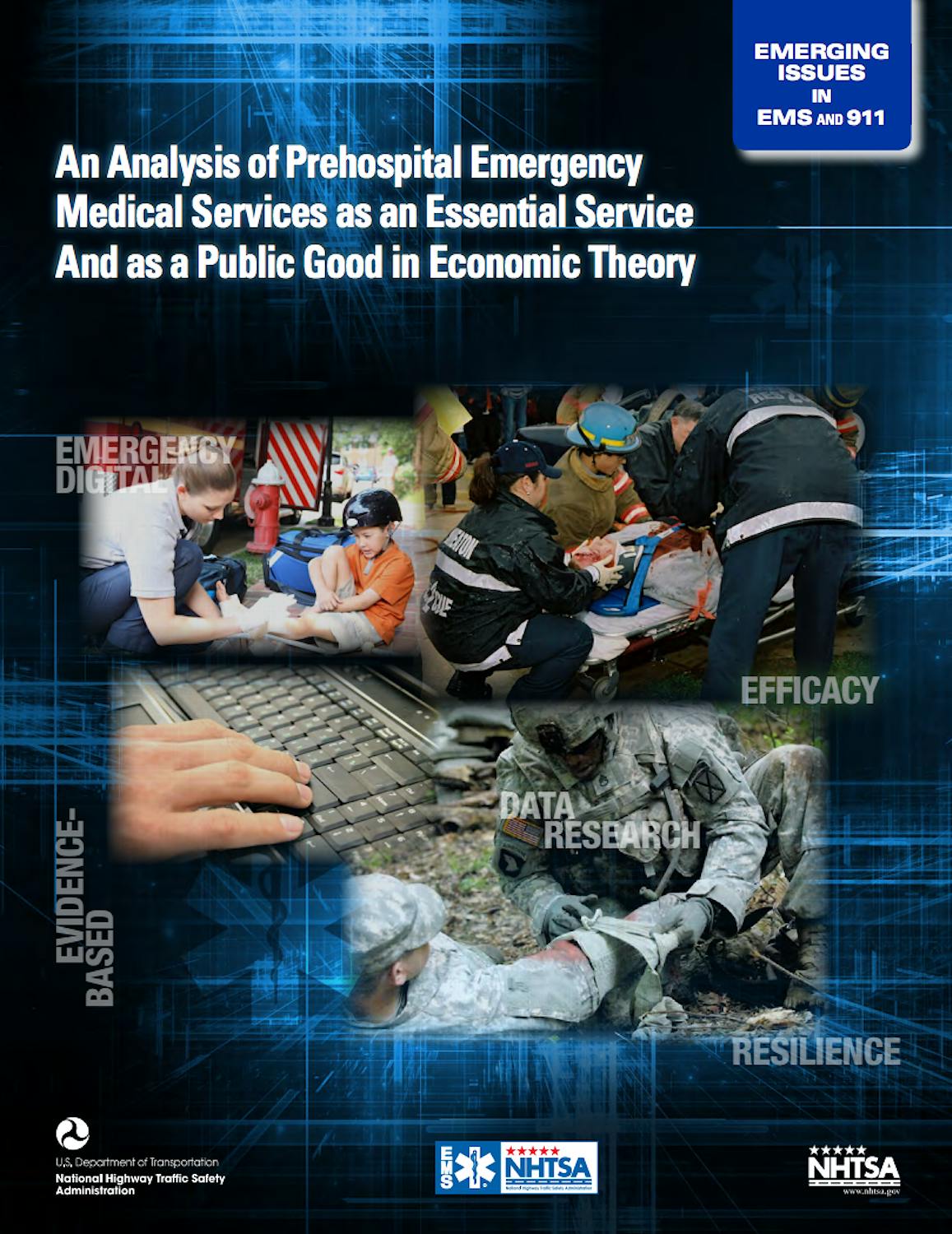
An Analysis of Prehospital Emergency Medical Services as an Essential Service and as a Public Good in Economic Theory
This white paper was produced to support the deliberations of the National Emergency Medical Services Advisory Council regarding options for funding Emergency Medical Service (EMS) systems at the state and local levels.
The paper explores the concept of an essential service as it relates to EMS and considers the pros and cons for states and localities of implementing EMS as an essential service. It also examines the characteristics of a public good in economic theory as they relate to EMS systems and discusses the general policy guidance economic theory offers regarding their efficient provision. The white paper, produced by the Academy's study team, does not take a position on whether EMS should be designated as an essential service, or on any other issues of Federal policy.
Click the button below to view the View Study Report.
View ReportKey Findings
1. While there is no authoritative legal or policy definition of an essential service in the United States, the study found that EMS may be considered an essential service based on two different, but complementary, definitions:
Ensuring public health and safety: a service whose interruption would endanger the life, personal safety, or health of the whole or part of the population. Emergency medical services may be understood as an essential service by the first definition in the context of “mass casualty incidents,” or during epidemics of infectious disease.
Ensuring equal access: a service to which all residents should be guaranteed access. Emergency medical services appear to fit the second definition of an essential service in so far as the public generally has come to expect that emergency medical services will be available every hour of every day to all residents regardless of ability to pay.
2. Although the study did not find any localities that have designated EMS as an essential service, it did identify at least four states that have implemented EMS as an essential service in statute (North Carolina, California, Oregon, and Colorado). These states take similar broad approach that appears to offer three advantages:
- Advantages: (1) ensures a minimum capability across the state; (2) provides the flexibility to organize and finance EMS systems to reflect local circumstances; and (3) provides resources to support voluntary improvement over time.
- Disadvantage: the financial burden that the statutory mandate to provide Emergency Medical Services imposes on counties.
3. EMS systems do not fit the definition of a public good in economic theory (a good such as national defense where it is difficult or impossible to exclude individuals from the benefit and it costs nothing to provide the benefit to additional individuals). EMS systems may be better understood as a type of good called a “common good” (a good where it is difficult or impossible to exclude users from the benefit, but where there is a marginal cost to provide the benefit to additional individuals).
4. As common goods, EMS systems face two challenges: financing and limiting overuse in the form of non-urgent calls. Economic theory suggests the following approach to these challenges. First, it may be most efficient to fund the costs of maintaining EMS system readiness to respond through taxation and the marginal cost of delivering services through user fees. Second, user fees may also be applied to deter overuse, but their deterrent effect will depend in part on the extent to which user fees are paid directly by individuals receiving the service rather than by insurers.
Recommendations
After examining the concepts of public goods and essential services, this study concluded that EMS is best understood as a common good that faces the challenges of financing and limiting overuse in the form of non-urgent calls. Given that the guaranteed availability of EMS system capacity to respond on demand is non-rival, economic theory suggests that it would be most efficient to fund the cost of EMS system “readiness” through taxation. EMS system capacity to respond to mass casualty incidents and the healthcare savings generated in in the context of routine emergencies also raise the question of which level of government should pay. For instance, investments in disaster preparedness may benefit multiple local jurisdictions and downstream healthcare savings may be expected to reduce claims on Medicare and Medicaid, which would benefit Federal and State taxpayer